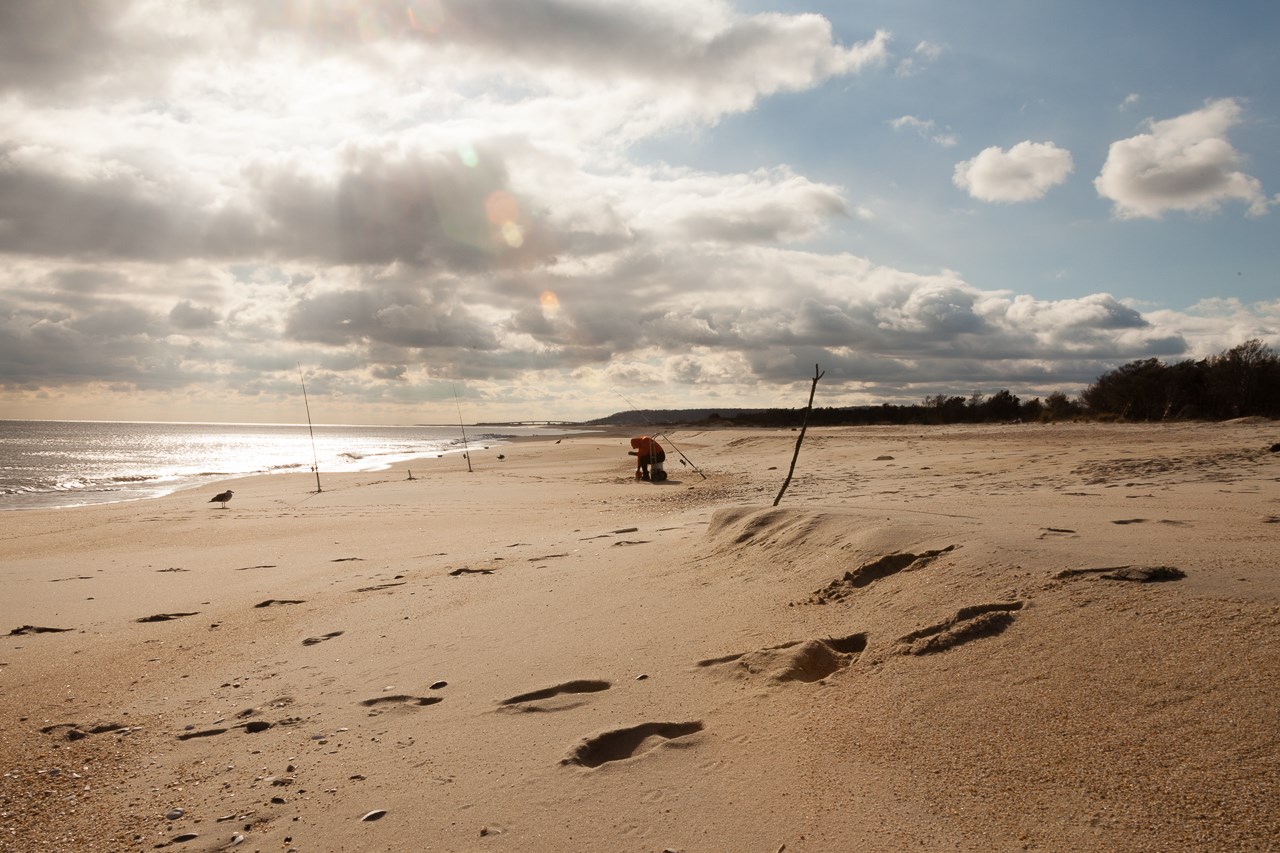
NPS Photo What comes to mind when you think about fishing? Patience, relaxation, challenge, and memories are a few words often associated with fishing. You will find all that and a sense of stewardship, conservation, and preservation on this page. We want you to have an enjoyable time during your visit, and for those who come after you to fish. Take some time to explore, learn what the park has to offer and learn your responsibilities before casting a line or flicking a fly into the water. Fishing At GatewaySaltwater fishing is the only type of fishing allowed at Gateway. No license is required for saltwater fishing, but there is a saltwater registry for both New York and New Jersey. Permits are required to park in many places throughout the park. Permits are also required to park after hours at any part of the park. Parking/After Hours Access for Fishing/2 Wheel Drive (SAHO, JABA, STIS)Fishing Access Permits provide after hours and parking access for fishing at designated locations throughout Gateway. The Fishing Access Pass is valid from time of issue through 3/31/26. All Fishing Access Pass/Vehicle Decals MUST be picked up by April 13, 2025. Purchase and pick up your pass from the primary location (Sandy Hook Unit, Staten Island Unit, Jamaica Bay Unit) where you plan to fish. In order to receive your Fishing Access Pass/Vehicle Decal, bring a printed copy of your Recreation.gov purchase to the Pick-up locations, dates, and times listed in the Need to Know Section. Pick-up locations may have limited internet connection and we ask that you bring a printed copy or take a photo of the QR code with your phone. The Fishing Access Pass/ Vehicle Decal must be affixed to the BUMPER on the vehicle associated with the Fishing Access Pass that was purchased. The Fishing Access Pass does not guarantee parking availability. For your safety, please remember that parking outside of designated areas is prohibited and visitors who park illegally may be fined and towed. You must be actively fishing while using the Fishing Access Pass. These passes are not valid for beach parking or for other recreational uses. Vehicle Decal Pickup - Jamaica Bay Unit, Ryan Visitor Center, Floyd Bennett Field: Fridays, Saturdays and Sundays ONLY 10 am - 3 pm Friday April 4,2025, Saturday April 5, 2025, Sunday April 6, 2025 Friday April 11,2025, Saturday April 12, 2025, Sunday April 13, 2025 Vehicle Decal Pickup - Staten Island Unit, Ranger Station, Miller Field and Fort Wadsworth options: Saturdays and Sundays ONLY 10 am - 2 pm Miller Field Ranger Station: Saturday April 5, 2025 Saturday April 12, 2025 Fort Wadsworth Visitor Center Sunday April 6, 2025 Sunday April 13, 2025 Vehicle Decal Pickup - Sandy Hook Unit, Light House Visitor Center: Saturdays and Sundays ONLY 10:00AM - 4:00PM Saturday April 5, 2025, Sunday April 6, 2025 Saturday April 12, 2025, Sunday April 13, 2025
Jamaica Bay Unit
Permits are not required during regular business hours at Off-Road Vehicle Permits (Jamaica Bay Unit, Breezy Point Tip)The Breezy Point Tip Off Road Vehicle (ORV) Permit for Fishing is a specialized permit necessary to access the sand road, sand lot and Breezy Point shoreline for the purpose of fishing. These are available in limited numbers. A 4-wheel drive vehicle is required. All-wheel drive vehicles are not recommended. Vehicles with 4-wheel drive and high clearance are best suited for off road driving due to the soft and sandy conditions.The ORV permit is also valid in other areas of the park where the fishing/parking permit is honored (paved lots only).
Fishing RegulationsFishing regulations for Gateway National Recreation follow 36 CFR 2.3 and those set by the States of New York and New Jersey.
Fish Consumption Advisories in National Park WatersThe Environmental Protection Agency, states, territories, and tribes provide advice on fish and shellfish caught in the waters in their jurisdiction to help people make informed decisions about eating fish. Advisories are recommendations to limit your consumption of, or avoid eating entirely, certain species of fish or shellfish from specific bodies of water due to chemical or biological contamination. Fish is part of a healthy balanced diet, but eating wild fish and shellfish caught in park waters is not risk free. Parks are “islands”, but the much larger “ocean” that surrounds them affects the natural resources inside a park. Other aquatic toxins are the result of natural biological processes. Also, chemical contaminants that originate outside of park boundaries can come into parks. Mercury is an example of a toxin originating outside a park that can find its way into a park. Mercury exists naturally in some rocks, including coal. When power plants burn coal, mercury can travel in the air long distances before falling to the ground, usually in low concentrations. Once on the ground, microorganisms can change this elemental mercury to methyl mercury. This type of mercury can build up in animal tissues, and it can increase in concentration to harmful levels. This high concentration can occur in large predatory fish - those often pursued and eaten by anglers. Studies have shown that fish in some National Park System waters have mercury levels that may be a concern to people who regularly eat a lot of fish. Fishing Throughout the National Park ServiceWe invite you to visit the Fish and Fishing website for more information about fish and fishing in the National Park Service. You will learn about conservation, different fish species, and parks that offer fishing. |
Last updated: March 31, 2025
